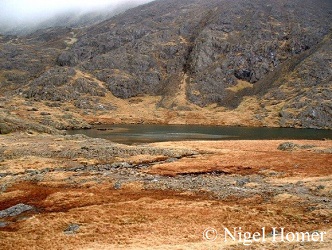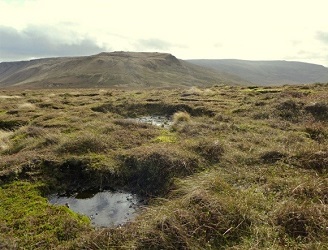Current ISIS code: W311
Previous assemblage name: W111 water bodies in acid mire matrix.
Linked assemblage: W312 Sphagnum bog, or F221 montane & upland.
Description of habitat typically supporting the assemblage: This aquatic, predominantly upland SAT was reviewed in 2008. It is probably be sensitive to nutrient enrichment and temperature rise.
This assemblage type is characterised by aquatic invertebrates. The assemblage type is found in lochans and temporary peat pools mainly in upland areas, but also at lower altitudes in northern districts.

This small species assemblage is composed of Dytiscidae water beetles, Corixidae water bugs and 3 caddisfly species. It is built from English data
and would probably benefit from more northern montane examples, and sampling from the far northern but low altitude mire systems of the outer Isles. This would increase the species representation and should result in a re-ordination of the whole dataset.

Potentially important environmental impacts
- Nutrient enrichment.
- Climate change
The warming of this northern shallow water systems may impact on oxygen levels.
Sampling & assessing the assemblage
Standard sampling protocols apply.
Target groups: Aquatic Coleoptera, Heteroptera and Trichoptera.
Fieldwork methods: Pond netting.
Alternative methods: n/a
Season: Summer.
Being naturally low productivity sites, sustained effort and fair weather are required to get enough species to achieve reasonable representation. Weather impacts can be particularly severe. It is likely that at least two visits will be necessary to adequately sample these peat pool systems.
Discrimination of conservation quality: good
Default target: 5 species
